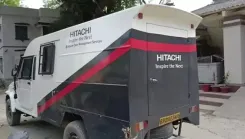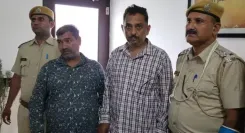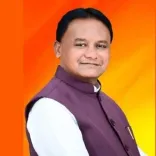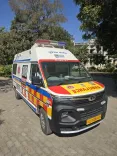How is the Gujarat government expanding its emergency service network with 542 general ambulances?

Synopsis
In a monumental move, the Gujarat government is set to enhance its emergency response capabilities by integrating 542 general ambulances into the 108 emergency service. This expansion promises faster response times and improved access to critical care, ensuring timely medical assistance for all residents. Learn how this initiative will transform healthcare in the state.
Key Takeaways
- 542 general ambulances integrated into the 108 service.
- Total ambulances in Gujarat will now be 1,499.
- Aims to reduce response times from 16.5 minutes to 10 minutes.
- Over 28.6 million people assisted by the service in the past two years.
- Annual budget of Rs 104.77 crore allocated for the initiative.
Gandhinagar, May 10 (NationPress) The Gujarat government has revealed a significant enhancement to its emergency medical services by merging 542 general ambulances into the state's 108 ambulance service.
These ambulances, which were previously located at various health facilities, will now function under the 108 emergency service framework to bolster the state’s capability in delivering swift and efficient medical emergency care.
The newly combined fleet comprises 118 ambulances from primary health centers, 310 from community health centers, 59 from sub-district hospitals, 31 from district hospitals, and 21 from medical college-affiliated hospitals.
This strategic integration aims to optimize emergency responses, especially for inter-facility transfers (IFT) and local emergency situations.
Currently, the 108 emergency service operates a fleet of 800 Advanced Life Support and Basic Life Support ambulances, along with 38 ICU-on-wheels throughout the state.
With the addition of 119 new ambulances this year, combined with the 542 reallocated vehicles, the total number of emergency ambulances in Gujarat is set to reach 1,499.
This expansion signifies a major upgrade in the state’s emergency medical infrastructure, aiming to provide quicker and more effective medical services to its residents.
The integration of these ambulances is anticipated to deliver numerous advantages to the state’s healthcare framework.
Over the last two years, the 108 emergency service has aided more than 28.6 million individuals, and the addition of the 542 ambulances will bolster the emergency healthcare response further.
The current daily workload for inter-facility transfers is around 350–400 cases, with average response times of 21.04 minutes in rural areas and 11.26 minutes in urban settings.
This expanded fleet aims to decrease the average response time from 16.5 minutes to just 10 minutes.
Furthermore, the ambulances will be integrated into the Smart Referral System, which will allow for real-time tracking of critical patient transportation and ensure patients are efficiently directed to suitable healthcare facilities.
The reallocation of ambulances from hospitals will also enhance the availability of vehicles for both general and critical emergencies, ensuring optimal resource utilization.
The integration of standardized medical equipment, consumables, and trained personnel across all ambulances will guarantee consistent and high-quality pre-hospital care.
Emergency service accessibility in remote and rural regions will be improved, enabling faster access to ambulances and critical care.
The system will incorporate real-time data integration, which will facilitate precise location tracking and performance analytics to guide future enhancements.
With all ambulances being GPS-enabled and centrally overseen via the Chief Minister's dashboard, coordination during crises like natural disasters or disease outbreaks will be more effective.
The Gujarat government has allocated Rs 104.77 crore annually to support this expanded initiative, which will encompass the operationalization of the new fleet, integration with emergency protocols, training, and management across the state.





